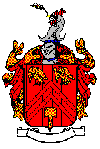
Public Libraries Families Genforum Links Other sites |
Lets examine first the group which we call the first Masters Family, recorded in our book as the second generation:
Although Guthrie, in his We Veitches, says that John Veitche's wife, Grace, was a Masters, this has been found nowhere else and Guthrie offers no documentation. John's wife was named Grace, as found in their many land records, but the fact that she was a Masters cannot be proven. Witnesses to John Veitch's will (Prince George Co. Will Lib. AD#5, fol. 23; Frederick Co. Will Bk A#1, fol. 29) are Thomas Wilson, Daniel Veatch and William Wilson. The usual procedure was for the witnesses of a will to be relatives of the wife and the husband, protecting the dowery. More work needs to be done here. A careful analysis of the inventory of Robert Masters, March 1716, perhaps sheds some light on the matter (Md. Prerogative Ct. Inv. & Accts vol 37 (1716-17), p. 68; Prince Georges Co., Inventory Lib BB#1, fol. 261): Amongst his belongings were ˝ of a ram in partnership with his brother, William Masters (total of 3 shillings and 0 pence) Administrator of his estate was William (W) Masters. Original thought was that these were the same person. In 1678 a William Masters arrived on the ship Joseph and Benjamin and in 1679 a Robert Masters was transported to Maryland by Robert Treago. A William Norris arrived in 1678 and is recorded on the page just before William Masters (Land Office Patents, 15:815, 186, 829, Maryland State Archives) The usual age of transported servants was between fourteen and twenty-three, so probably these three men were born between 1652 and 1665. It is conceivable that they are the William Masters, Robert Masters, and William Norris found in the estate records of 1716: they would have been 43 to 54 years old, not a young age for death in the 17th century Chesapeake, but old enough to have a son born about 1690 and present to administer an estate. We know that a William Norris was Robert’s brother-in-law and since Robert had a brother William, also was William’s brother-in-law. Is it a coincidence that three men of the same names were associated in Prince George’s County 37-38 years after the three immigrants arrived on the Eastern Shore? In fact, the normal thing for men who had survived their period of indenture to do was move west where land was available – to present day Prince George’s County, for example. William Norris is not in the 1719 tax list for Prince George’s County, but is in the levy lists for 1716 and 1717. A William Norris purchased land in Baltimore County in 1705 and died in Baltimore County in 1720. (At that time the two counties were contiguous at their western edges.) Are the William Norris in Baltimore County and the William Norris in Prince George’s County the same person? If not, there is the additional coincidence of another William Norris in an adjacent county dying only four years after Robert Masters’ brother-in-law witnessed the inventory of his estate. Yet William (W) Masters lived on for another 55 years. The Levy list of 1717 (Prince George’s County Court Proceedings, H:565) lists two Williams and the tax list of 1719 (Maryland State Papers, the Black Books, X:7) for William gives two tithables. Neither of the sons of William (W) were old enough to be taxed; thus a second William with sons old enough must be recognized:
Thus a case can be made that Robert Masters, who died in March of 1716, was the immigrant ancestor and that he had both a brother, William, and a son, William (called Sr. in the book) who used the mark (W). |